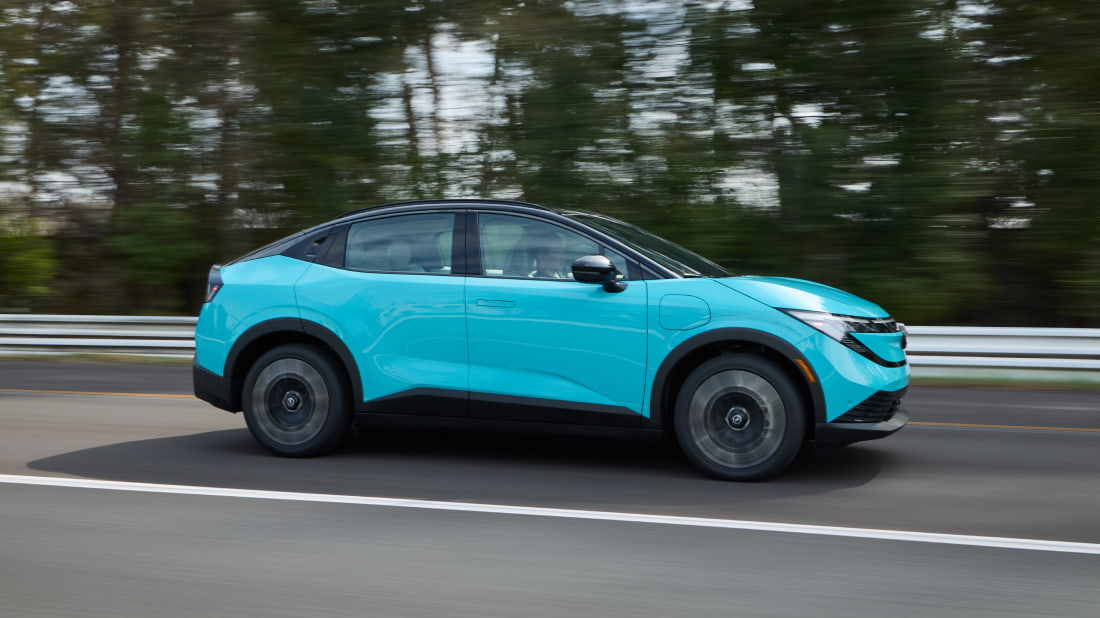Nissan has unveiled its third-generation Leaf EV with a completely new design. The 2026 model sheds the last vestiges of its original compact car body and leans fully into crossover SUV territory. The new look offers some design features that are commonly seen in the all-electric vehicle marketplace, allowing it to compete against other models in its class. These include available dual 14.3-inch displays, flush door handles for better aerodynamics, and liquid-cooled lithium-ion batteries.
The new Leaf is also the latest EV to adopt the NACS charging port after Tesla made it open-source in 2022. Since then, just about every major automaker from Ford to Mercedes has adopted the standard, with these brands getting access to Tesla’s Supercharger network on a rolling basis. For added convenience, a J1772 port, the most common standard for Level 2 chargers, is included on the driver’s-side fender. The Leaf’s video announcement highlights bi-directional V2X technology that allows drivers to power their homes, send power to the grid, or provide power when camping, though details are sparse.
In the same video, Nissan’s head of global design, Alfonso Albaisa, explains the lengths the company went to in making the car as aerodynamic as possible in order to achieve the car’s stated 300-mile range. The rear door handles, for instance, are built into the C-pillar, which could make for an awkward angle when trying to open the door with your hands full. The body of the Leaf has a chunky, SUV-like stance, with a wide front reminiscent of the Volkswagen ID.4. In the end, all these design choices helped the new Leaf reduce its drag coefficient by 10 percent from the previous generation.
Nissan is also bringing the new Leaf’s battery thermal management to par with other major EV brands, which will improve charging performance in cold weather. The car will capture wasted heat from the drive motor and the on-board charger, and use it to help warm the battery to its ideal temperature for charging. In frigid conditions it can also use the car’s heat pump, and a dedicated battery heater to further maintain battery temperatures.
Design easter eggs throughout the car pay homage to the brand’s name by incorporating “2-3” iconography in the form of stripes, which are meant to represent the kanji writing of two and three in Japanese, pronounced “ni” and “san.”
The new Leaf is built on a 75-kWh, liquid-cooled battery pack and packs a 214-horsepower electric motor. It will be offered in a wide variety of color options along with a slew of optional features like 19-inch wheels, dimming panoramic roof and 64-color ambient lighting. Built-in Google integrating Google Maps, Google Assistant and the Play Store into the Leaf is also an available option. Wireless Apple CarPlay and Android Auto will be standard on the Leaf S and S+. Nissan says a cheaper 52-kWh version with a 174-horsepower motor will become available at a later date.
This major redesign comes amid a turbulent last year for Nissan, culminating in its CEO stepping down after a failed merger with Honda. The automaker had previously gone through a downsizing last year as part of its mission to cut billions of dollars in costs.
The 2026 Nissan Leaf will hit showrooms this fall, though pricing has yet to be announced.
This article originally appeared on Engadget at https://www.engadget.com/transportation/evs/nissan-unveils-the-third-generation-leaf-ev-145620303.html?src=rss
